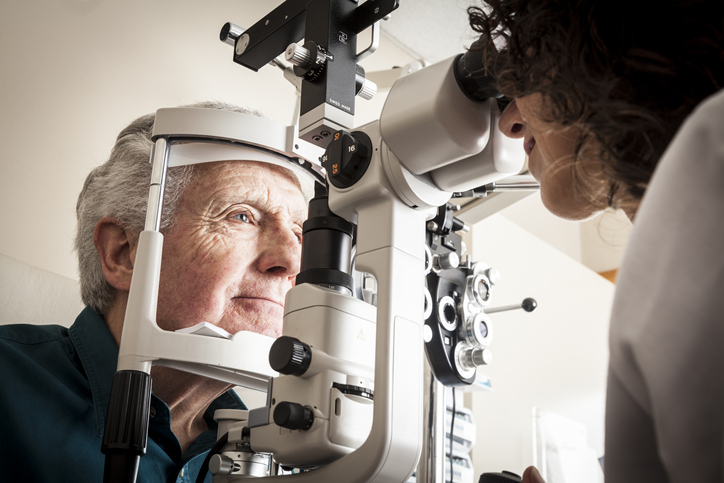
If macular degeneration is diagnosed, you’ll need to know the information in this article.
If your aging family member has received a diagnosis of age-related macular degeneration, you’re likely to have a number of concerns and questions. And you’re not alone; approximately 11 million Americans have been given the same diagnosis, and that number is estimated to double by the year 2050. Inspired Home Care is on hand to highlight the information you need to more fully understand this disease and how to best assist your senior loved one.
What is macular degeneration?
Age-related macular degeneration (ARMD) is a disease in which the middle of the retina (the macula) is damaged, affecting central vision and the details used in reading, driving a car, watching movies and the television, and distinguishing the faces of other people. It is the number one cause of permanent central vision blindness in older individuals, having an effect on 1 out of every 3 adults over age 75. It’s also important to understand that macular degeneration will not commonly bring on complete blindness; peripheral vision remains unchanged.
What are the two forms of macular degeneration?
ARMD can occur in two kinds:
- Wet ARMD: Accounting for approximately 10 – 20% of all diagnoses, wet age-related macular degeneration causes a build-up of drusen – fat deposits – and an irregularity of the blood vessels under the retina. Both of these effects together cause damage to the retina. Wet ARMD can progress quickly and result in significant and irreversible loss of central vision.
- Dry ARMD: Dry ARMD comprises the vast majority (up to 90%) of macular degeneration diagnoses. As with wet ARMD, drusen appears under the retina, causing a thinning of the macula and ultimate loss of central vision. Acceleration is more gradual in this kind of ARMD, but it can progress to wet ARMD.
In both varieties of ARMD, early diagnosis and continued monitoring are vital to preserving remaining vision.
How is ARMD diagnosed?
All older adults should receive eye exams at least on a yearly basis. To detect ARMD, the eye doctor will dilate the eyes and conduct a fundoscopy, fundus photography, and a visual acuity test. If ARMD is presumed, an added assessment, a fluorescein angiography, will most likely be needed. In this test, dye is injected to recognize any leaks in the blood vessels. The Amsler grid eye test is a quick and easy tool that can also be used at home as a first step in discovering if ARMD may be a possibility.
What treatment methods are offered for ARMD?
While there’s currently no cure for macular degeneration, there are a number of treatment options the doctor may want to try to cease the progression of the disease:
- Antioxidants and zinc
- Afibercept
- Ranzibizumab injections
- Pegaptanib sodium injections
- Photodynamic therapy
- Bevacizumab injections
- Vision rehab and low vision aids
Is it possible to prevent macular degeneration?
Putting into practice healthy lifestyle choices, like stopping (or not beginning) smoking, regularly exercising, sticking to a healthy diet that includes an abundance of fruits, vegetables, and fish, sustaining a healthy weight and normal blood pressure, and wearing eye protection when outside, such as sunglasses and hats, could help reduce the chance of developing ARMD.
For a trusted partner in care for a senior with macular degeneration to provide help with transportation, medication reminders, meal preparation, light housework, and much more, contact Inspired Home Care, a trusted provider of in-home senior care in Palatine, IL and the surrounding areas, any time at 847-787-7572.
